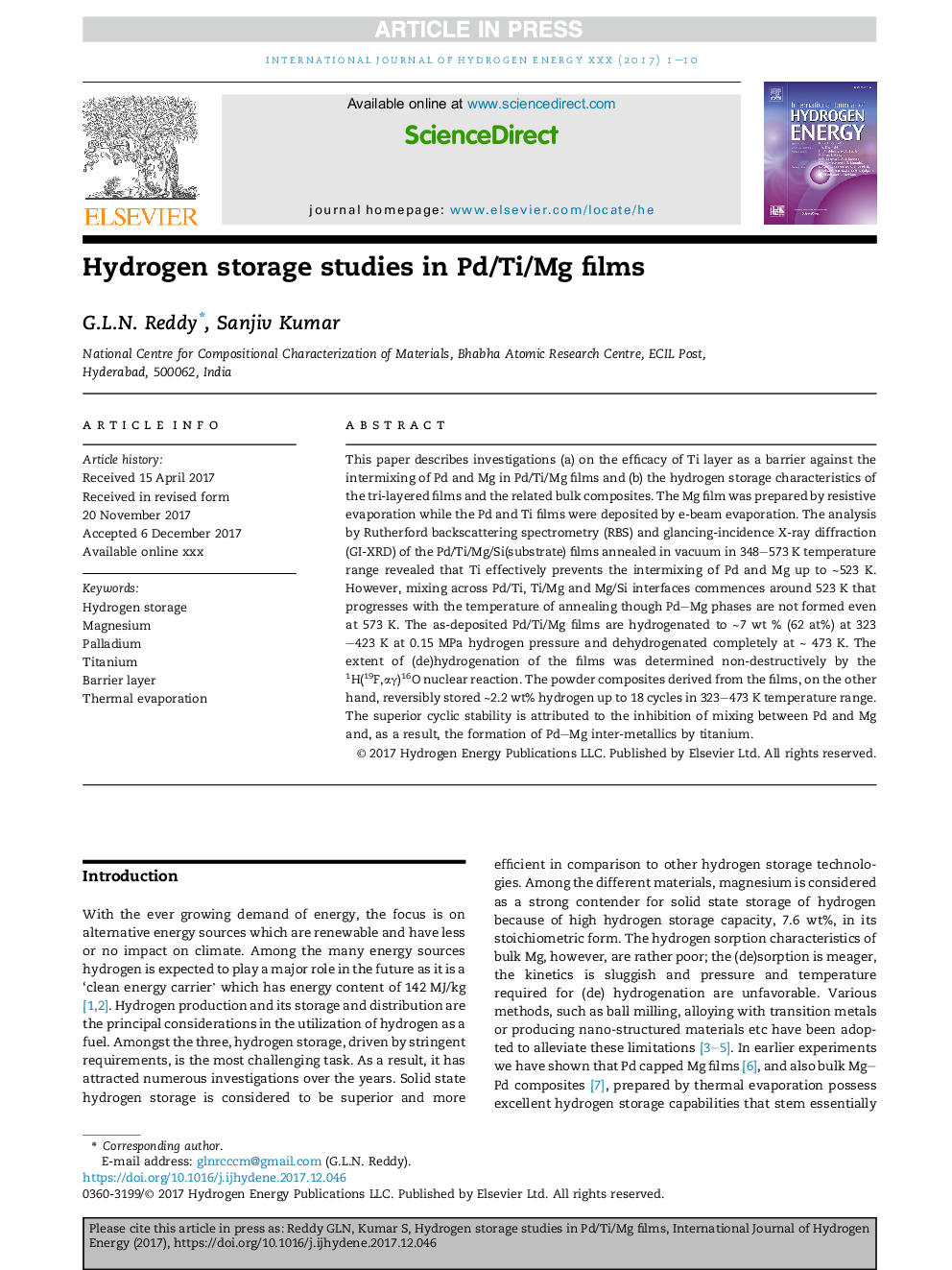| Article ID | Journal | Published Year | Pages | File Type |
|---|---|---|---|---|
| 7708037 | International Journal of Hydrogen Energy | 2018 | 10 Pages |
Abstract
This paper describes investigations (a) on the efficacy of Ti layer as a barrier against the intermixing of Pd and Mg in Pd/Ti/Mg films and (b) the hydrogen storage characteristics of the tri-layered films and the related bulk composites. The Mg film was prepared by resistive evaporation while the Pd and Ti films were deposited by e-beam evaporation. The analysis by Rutherford backscattering spectrometry (RBS) and glancing-incidence X-ray diffraction (GI-XRD) of the Pd/Ti/Mg/Si(substrate) films annealed in vacuum in 348-573 K temperature range revealed that Ti effectively prevents the intermixing of Pd and Mg up to â¼523 K. However, mixing across Pd/Ti, Ti/Mg and Mg/Si interfaces commences around 523 K that progresses with the temperature of annealing though PdMg phases are not formed even at 573 K. The as-deposited Pd/Ti/Mg films are hydrogenated to â¼7 wt % (62 at%) at 323-423 K at 0.15 MPa hydrogen pressure and dehydrogenated completely at â¼Â 473 K. The extent of (de)hydrogenation of the films was determined non-destructively by the 1H(19F,αγ)16O nuclear reaction. The powder composites derived from the films, on the other hand, reversibly stored â¼2.2 wt% hydrogen up to 18 cycles in 323-473 K temperature range. The superior cyclic stability is attributed to the inhibition of mixing between Pd and Mg and, as a result, the formation of PdMg inter-metallics by titanium.
Related Topics
Physical Sciences and Engineering
Chemistry
Electrochemistry
Authors
G.L.N. Reddy, Sanjiv Kumar,
